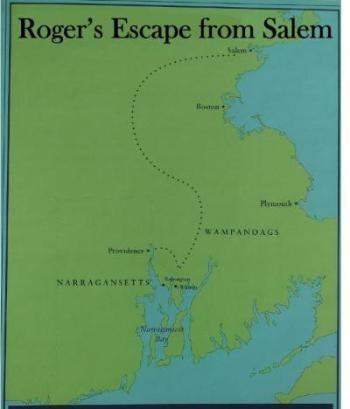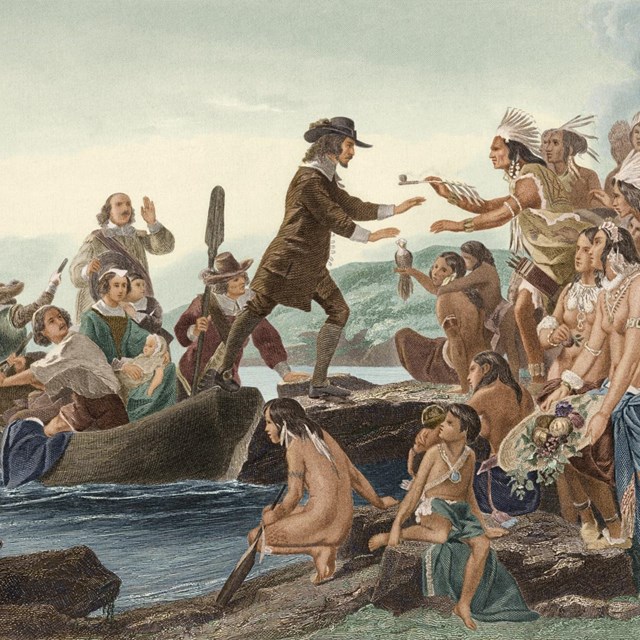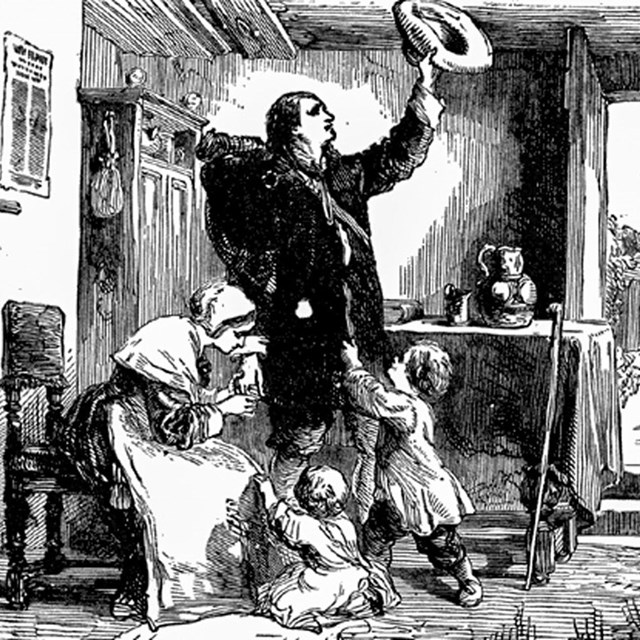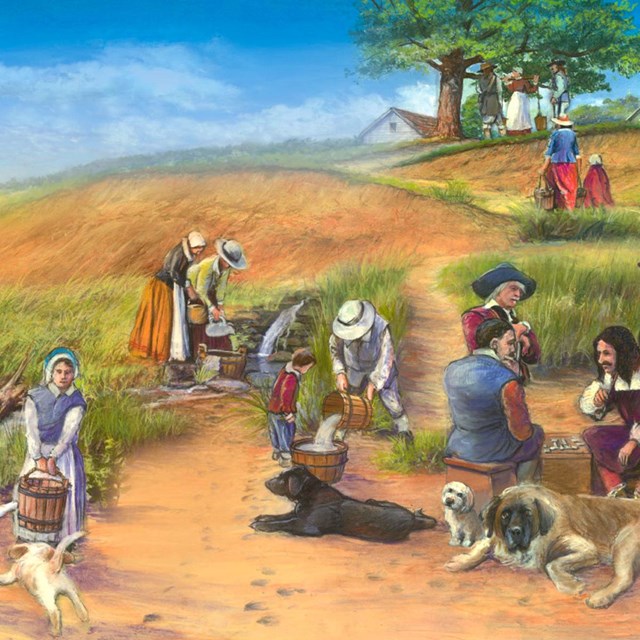
As Chief Sachem of the Wampanoag, Massasoit welcomed Roger. He sheltered him through the winter. That spring Massasoit gave him a tract of land along the Seekonk River in what is now East Providence. A handful of Roger’s followers came down from Salem and began to plant fields and build houses. Almost as soon as they had started, Roger received a letter from Governor Winslow of Plymouth. Winslow warned Roger that he was within the bounds of Plymouth Colony and advised him to cross the Seekonk River. By moving beyond Plymouth’s jurisdiction, all could live as friends. In a canoe with several others, Roger scouted the area across the Seekonk River. They spotted a group of Narragansett on a large rock, known afterwards as Slate Rock. As they approached, the Narragansett greeted them by calling out: “What Cheer Netop!” This greeting is a combination of English and Narragansett languages. ‘What cheer’ was an informal common English greeting of the day, short for ‘what cheery news do you bring’ and today’s equivalent of “what’s up?’’ “Netop” is the Narragansett word for friend. Learn More
|
Last updated: October 1, 2020



